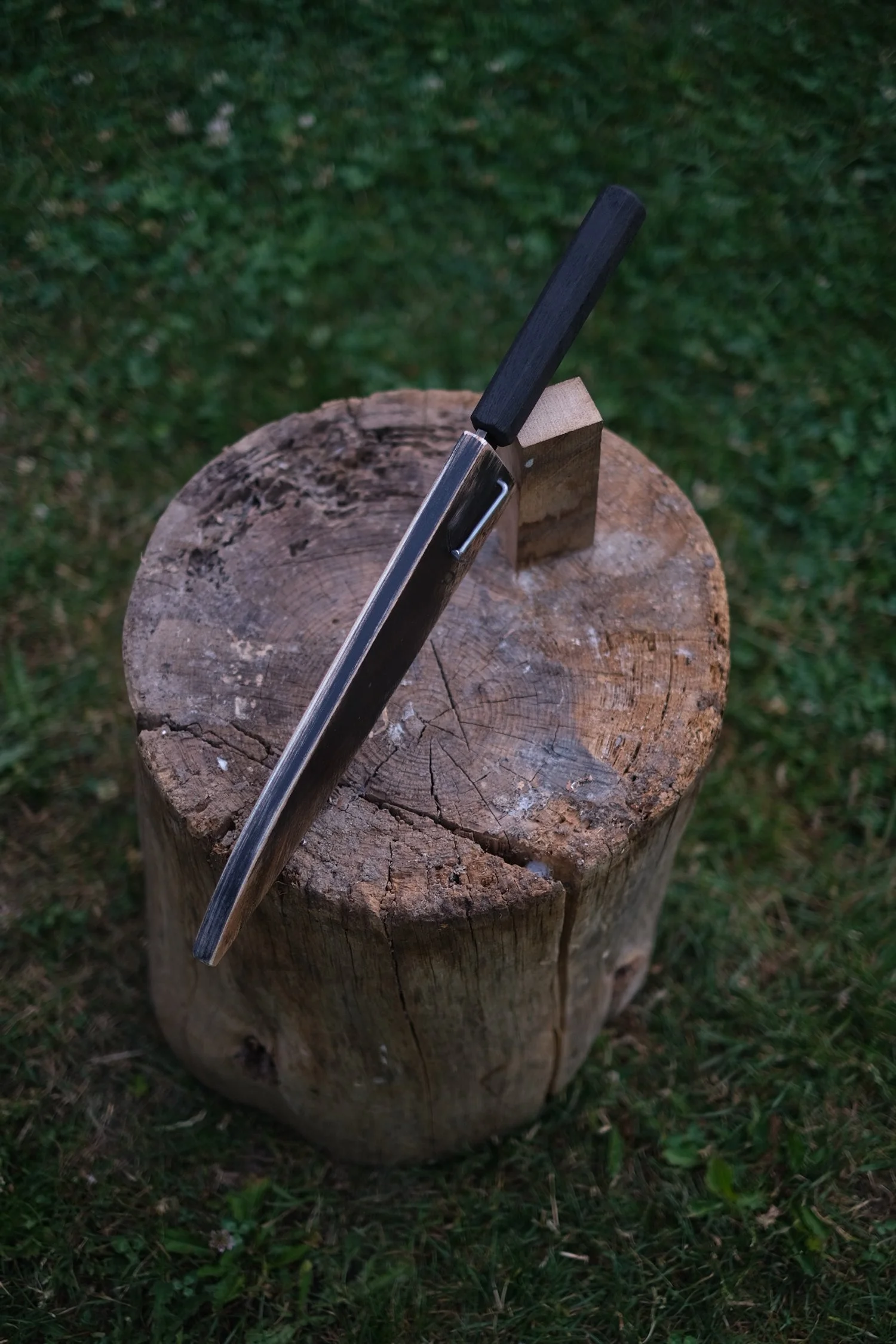 Image 1 of 7
Image 1 of 7

 Image 2 of 7
Image 2 of 7

 Image 3 of 7
Image 3 of 7

 Image 4 of 7
Image 4 of 7

 Image 5 of 7
Image 5 of 7

 Image 6 of 7
Image 6 of 7

 Image 7 of 7
Image 7 of 7








Wrought iron gyuto
Dirty wrought iron and steel
Large gyuto
The blade is 280mm , forged in dirty wrought iron sanmai with 145sc steel for the edge.
57mm at heel.
Convex and kasumi grind.
Kurouchi as usual :)
Spine thickness start at 6mm at the handle to finish at 0.8mm ( at 10 mm from the tip).
The handle is my classic 150mm burnt oak.
The total weight is 270g
Wrought iron contains slag inclusions made of silicates and iron oxides, sometimes with traces of sulphur compounds. These non-metallic fibres run through the metal like veins and contribute to its fibrous, layered structure. Unlike in modern steels, where sulphur can cause brittleness, in wrought iron these compounds remain trapped in the slag and don’t affect toughness — they’re part of what gives the material its texture and character, both in the forge and in the finished blade.
It also welds easily at relatively low temperatures, making it ideal for sanmai construction. This allows the central steel — in this case 145SC — to be forged and laminated without overexposing it to heat, preserving its fine grain structure and setting the stage for a clean, controlled heat treatment later on.
Dirty wrought iron and steel
Large gyuto
The blade is 280mm , forged in dirty wrought iron sanmai with 145sc steel for the edge.
57mm at heel.
Convex and kasumi grind.
Kurouchi as usual :)
Spine thickness start at 6mm at the handle to finish at 0.8mm ( at 10 mm from the tip).
The handle is my classic 150mm burnt oak.
The total weight is 270g
Wrought iron contains slag inclusions made of silicates and iron oxides, sometimes with traces of sulphur compounds. These non-metallic fibres run through the metal like veins and contribute to its fibrous, layered structure. Unlike in modern steels, where sulphur can cause brittleness, in wrought iron these compounds remain trapped in the slag and don’t affect toughness — they’re part of what gives the material its texture and character, both in the forge and in the finished blade.
It also welds easily at relatively low temperatures, making it ideal for sanmai construction. This allows the central steel — in this case 145SC — to be forged and laminated without overexposing it to heat, preserving its fine grain structure and setting the stage for a clean, controlled heat treatment later on.
